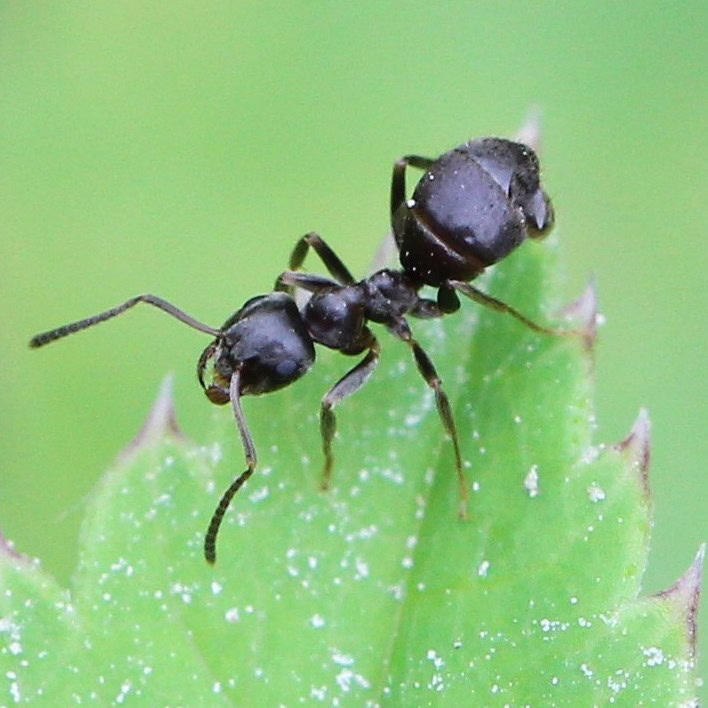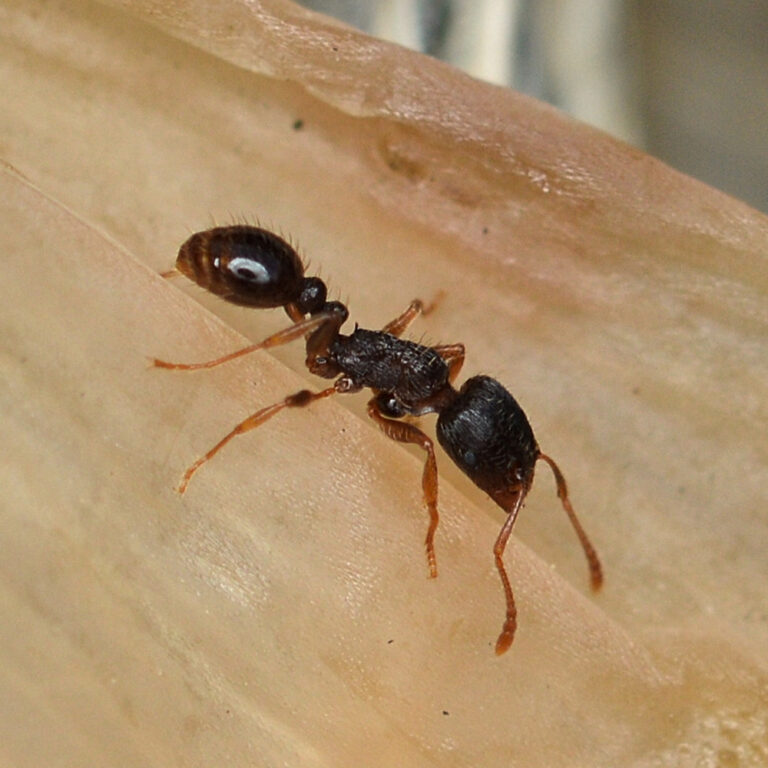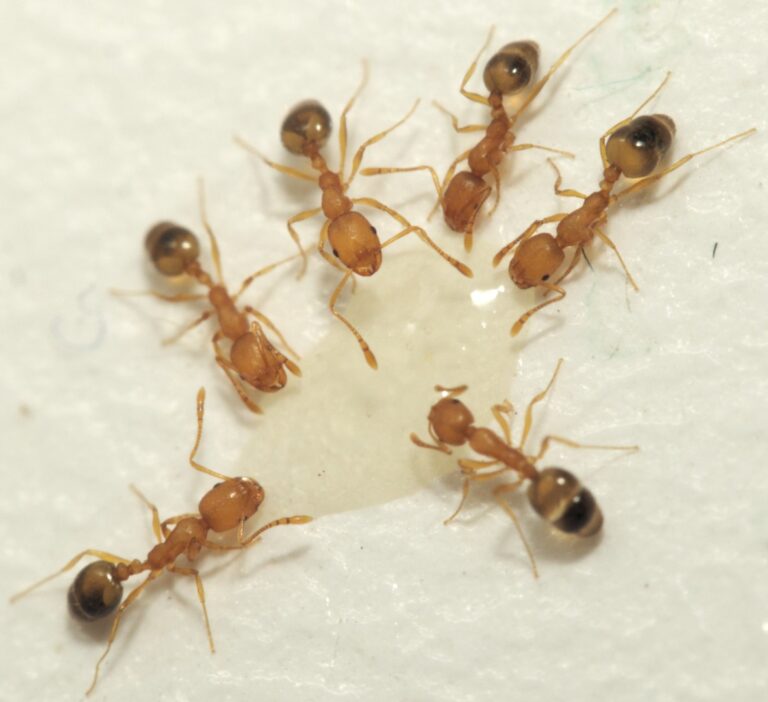Carpenter Ant
What is a Carpenter Ant?
The carpenter ant, a member of the Formicidae family, is one of the largest and most common ant species that can infest buildings. These insects prefer moist wood to establish their nests, making them particularly dangerous for wooden structures.
Although they do not consume wood like termites, carpenter ants tunnel through it to create their nests, thereby causing significant structural damage.
How to Identify Carpenter Ants?
Characterized by their large size, ranging from 6 to 25 mm, and their variety of colors from deep black to vibrant reddish hues, carpenter ants are recognizable by several visual clues, notably the fine wood shavings they expel from their nests under construction. This sawdust, often accumulated in small piles near entry points or at the base of walls, serves as a telltale sign of their active presence within a structure.
The discovery of these small mounds of sawdust is a call to action, urging concerned homeowners to seek Exterminapro’s expertise for a thorough inspection and the development of a targeted extermination plan, aimed at preserving both the structural safety of the dwelling and the well-being of its occupants.

Additional Information on Carpenter Ants
Type of Pest
These social insects pose a serious threat to wooden structures, requiring professional control measures to protect properties.
Appearance
Their large size and distinct coloring make identification easier and emphasize the need for increased vigilance to detect their presence.
Lifespan
The long lifespan of carpenter ants, combined with their reproductive potential, accentuates the importance of completely eradicating the colony to prevent long-term damage.
Habitat
Their preference for moist wood underscores the necessity to sanitize and maintain structures to prevent infestations.
Diet
Carpenter ants have a varied omnivorous diet, favoring sweet substances like honeydew, as well as insects and proteins from organic matter. This diversity makes them likely to explore dwellings in search of food.
Do I Have a Carpenter Ant Problem?
The presence of wood shavings, scratching noises in the walls, and the discovery of large ants in your home may indicate a carpenter ant infestation. Exterminapro can help you diagnose and resolve the issue effectively.
Signs of a Carpenter Ant Infestation
- Damage to Wood, Visible by Excavated Galleries: The appearance of galleries and tunnels in wood, accompanied by fine sawdust, is an undeniable sign of carpenter ant activity, necessitating immediate intervention.
- Fine Wood Shavings Near Nests or Entry Points: The presence of small mounds of sawdust is a clear indicator that ants are active in the area, digging and constructing their network of nests.
- Increased Ant Activity, Especially at Night: Carpenter ants are primarily nocturnal. Observing increased activity during the night may indicate an infestation close to or inside your home.
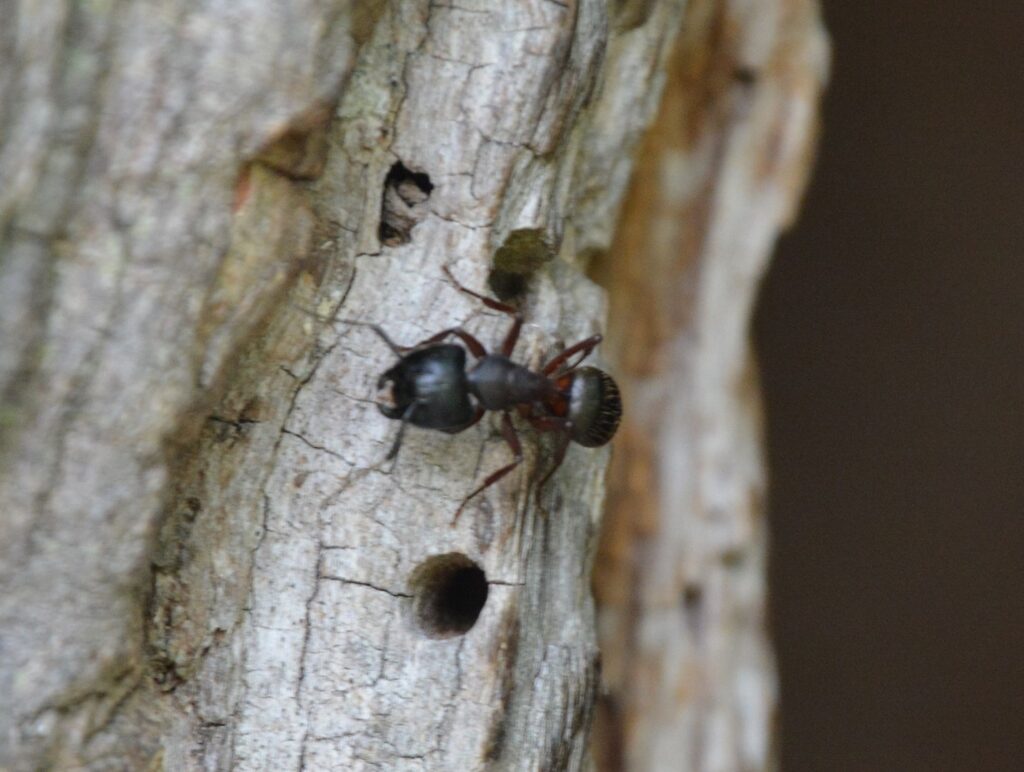
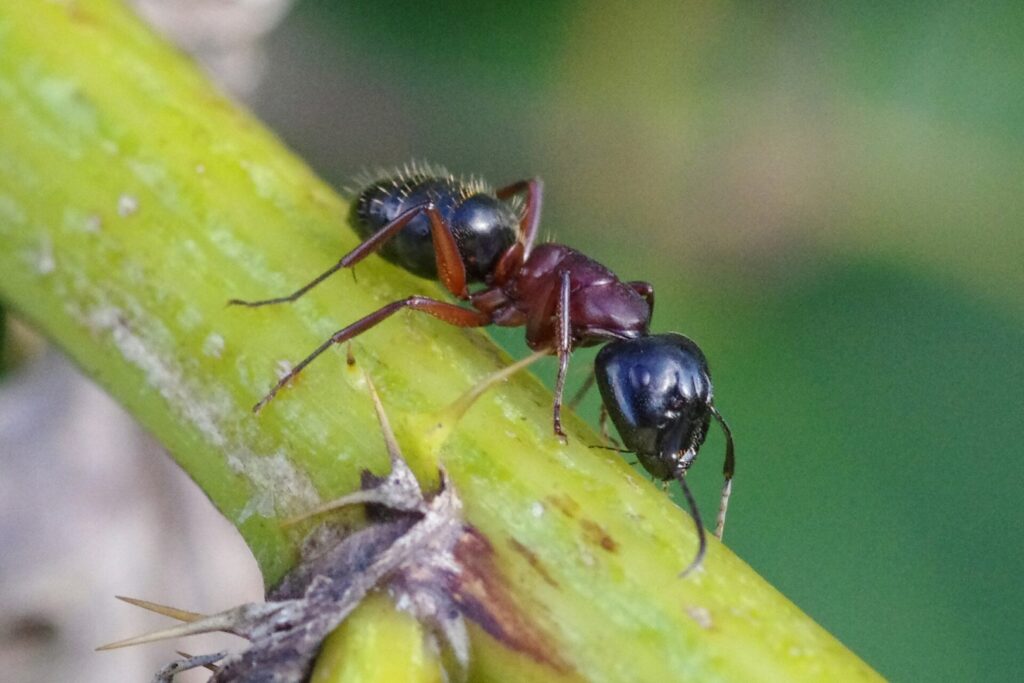
Risks Associated with Carpenter Ants
Carpenter ants, with their notable ability to inflict significant structural damage by tunneling through wood, represent a threat not only to the integrity of your home but also to public health. By contaminating food with debris and potentially pathogens as they move through the house, they raise health concerns that cannot be overlooked.
To effectively combat these pests while protecting the sanitation of your domestic environment, Exterminapro offers personalized and sustainable solutions, eradicating existing colonies and implementing preventive measures to secure your home against future invasions.
What are the Treatments for Eliminating Carpenter Ants?
Exterminapro provides a range of personalized treatments to combat carpenter ant infestations, including targeted chemical methods and systemic solutions.
Preventing Carpenter Ant Infestation
- Elimination of Moisture Sources and Rotted Wood: Recognizing that moisture and deteriorated wood attract carpenter ants, we advise sanitizing at-risk areas and replacing or repairing water-damaged wood to eliminate potential habitats for ants inside and around your property.
- Sealing Cracks and Openings to Prevent Their Entry: Special attention is paid to caulking cracks, crevices, and openings in walls, foundations, and roofs to block access points that could be exploited by ants to enter structures.
- Regular Maintenance to Avoid Water Accumulations Around the Structure: Exterminapro emphasizes the importance of effective rainwater management and regular maintenance of gutters and drains to prevent moisture buildup, thus reducing the attractiveness of your habitat to carpenter ants.
Types of Treatments to Counter Carpenter Ants
- Exclusive Baiting Method for In-depth Eradication: Exterminapro innovates with a unique baiting technique, designed to target carpenter ant colonies at the root. This approach, both environmentally respectful and safe for health, completely eliminates the colony, including the queen, the main nest, and satellite nests, without resorting to the use of harmful pesticides. The treatment also encompasses the exterior perimeter of the dwelling, offering a basic two-year guarantee, possibly more.
- Specific Chemical Treatments to the Nest to Eliminate the Colony: Exterminapro applies targeted insecticides directly into the nests and tunnels excavated by carpenter ants, ensuring effective elimination of the queen and workers, which is crucial for destroying the colony in its entirety. This direct and powerful method is designed to provide a lasting and rapid solution to the infestation problem.
- Protective Barriers to Prevent Entry of New Ants: In addition to chemical treatments, physical and chemical barriers are established around foundations and potential entry points to deter new ant intrusions. These carefully crafted barriers act as a first line of defense against future invasions.
- Regular Follow-up and Prevention Advice to Avoid Recurrences: Aware that combating carpenter ants is an ongoing process, Exterminapro offers a post-treatment follow-up program, including periodic inspections and adjustments of preventive strategies to ensure that ants do not return.
How to Permanently Eradicate Carpenter Ants?
With Exterminapro, benefit from a professional and targeted approach to eradicate carpenter ants and secure your home against future invasions.
Intervention Process
How Much Does It Cost?
Get a Free Estimate
The cost depends on the extent of the infestation and the necessary treatments. Contact Exterminapro for an accurate estimate and tailored advice to protect your property.

